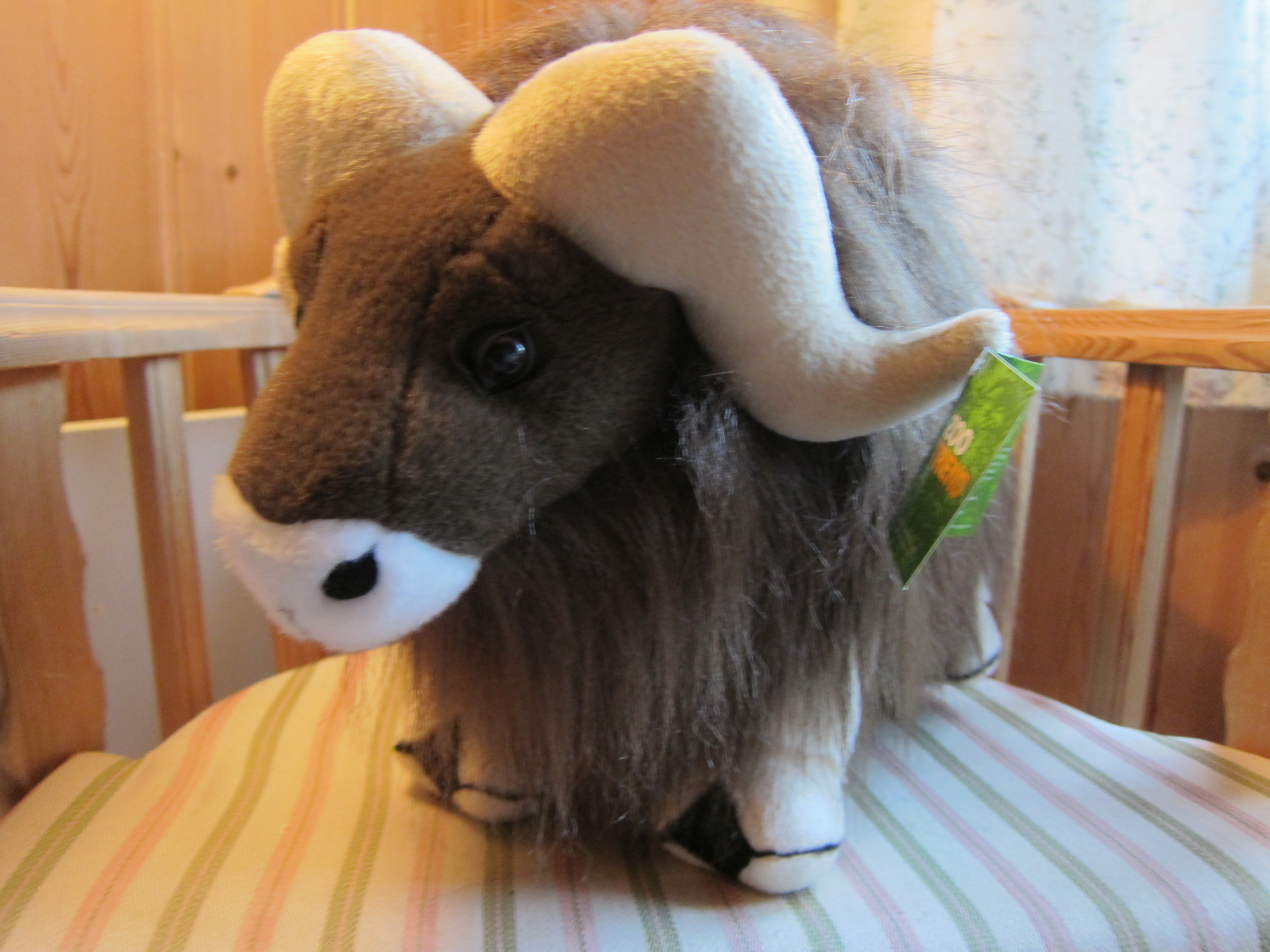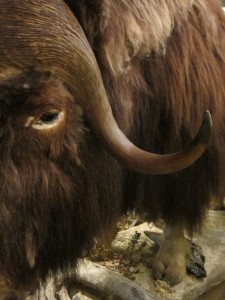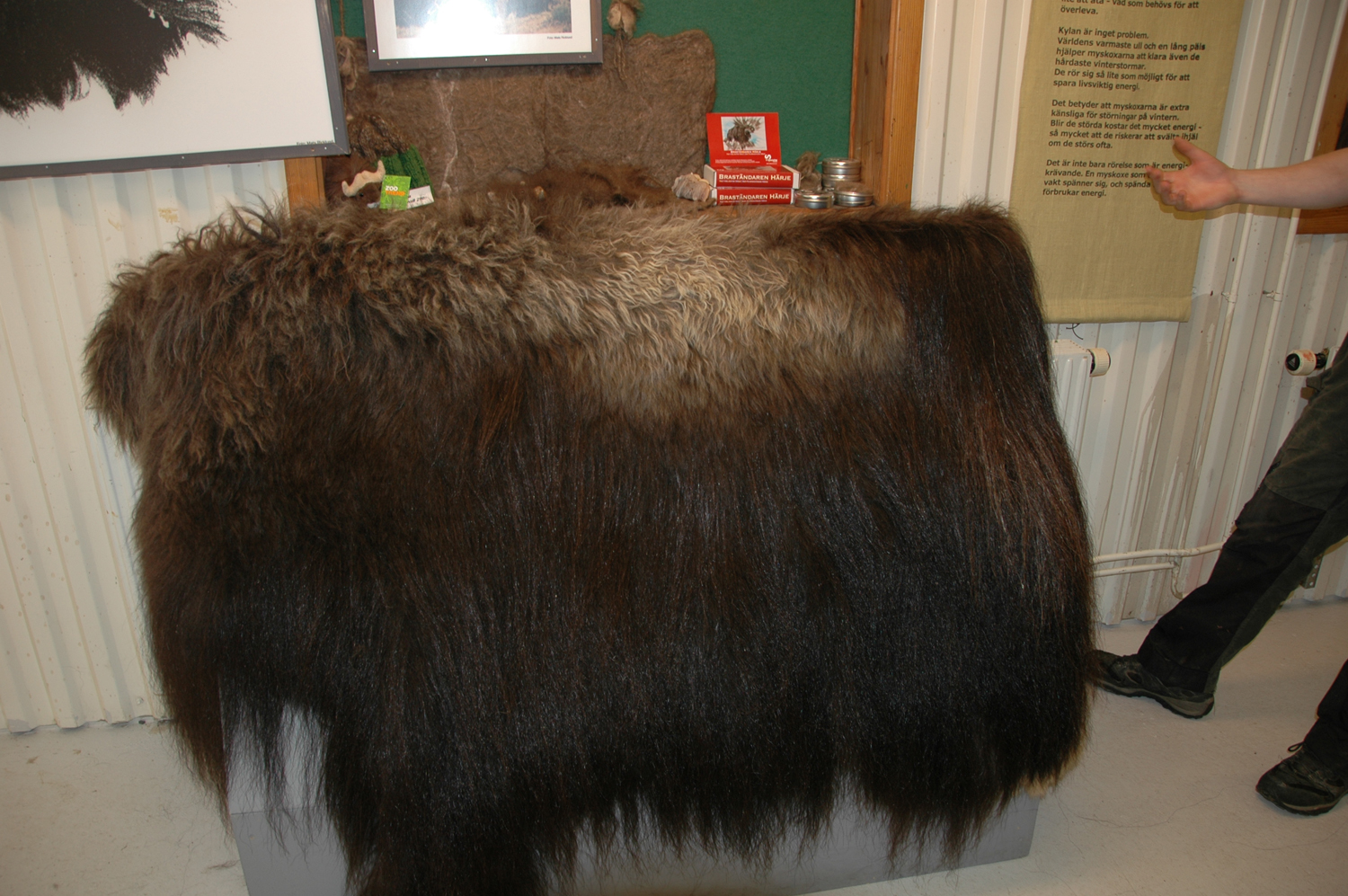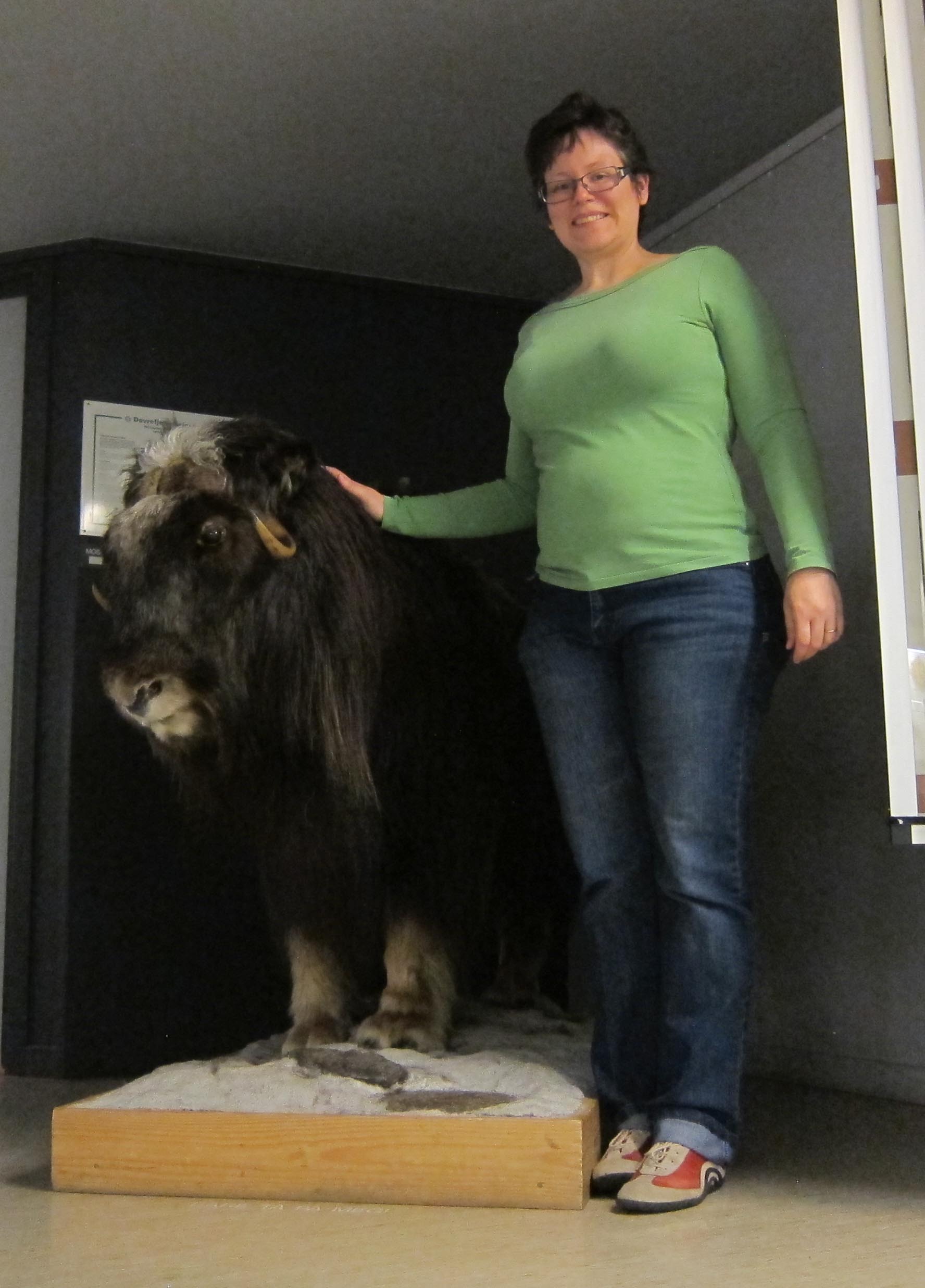
Muskox mascots
In the main tourist shop in Dombås, which had a huge number of buses filled with foreign tourists stopped there, there were souvenirs with Norwegian flags and trolls and lots and lots of moose. Moose were everywhere on the souvenirs. I guess when people think of Norway, they think of moose. I didn’t see a single muskox.
Yet in the last two days, I have been overloaded with muskox. They sternly look out from signs, brochures, and posters. Their likenesses ae captured as paperweights, children’s toys, and even fire starters. There are very expensive muskox wool knitted hats and mittens and sweaters. The muskox mania was visible both in Härjedalen on the Swedish side of the border and in Dovre commune on the Norwegian side. As my guide at the Myskoxcentrum said yesterday about muskox,
They are more like a mascot, one can say, or a symbol for Härjedalen.
Even downstairs from the Trollstua that was empty of muskox, a small but new annex in the Dombås tourist office called the National Park Center was dominated by them. The first thing the visitor sees in the hallway is a muskox skin and that you can touch and then 7 large photos of animals from the area, 2 of which show muskox. Although a set of reindeer antlers sits next to the sign for Rondane National Park, Norway’s first national park, there is not a complete reindeer on exhibit. There is a family of wolverines (they were cool!), a beaver, and lots of birds — and there are the muskox. The muskox display in the last room has a mother and calf taxidermied specimens as well as three skulls and lots of photos. Although reindeer are more populous than muskox, it is muskox that is the draw with special muskox safaris offered every day by multiple outfitters in town.
By becoming emphasised and symbolised, the muskox may or may not have a future here. In Wild Ones, Jon Mooallem observed poignantly:
In the twenty-first century, how species survive, or go to die, may have more to do with Barnum than Darwin. Emotion matters. Imagination matters. The way we see a species can impact its standing on the plantet more than anything covered in ecology textbooks.

I see many similarities of Mooallem’s discussion of polar bears with the Scandinavian muskox. They have, just like teddy bears, been converted from oxen with a temper to big kind mammas and cute cuddly babies. They still look strong and powerful, but the edge is taken off. That can be a good thing because people are then drawn to spend their money on tours and souvenirs of muskox, which encourages locals to have them around. At the same time, this changing of the muskox’s nature might make visitors and locals alike complacent and come into conflict with an animal that has no qualms about charging a person. Only time will tell if the muskox mascots remain physically and emotionally at the center of this region.




